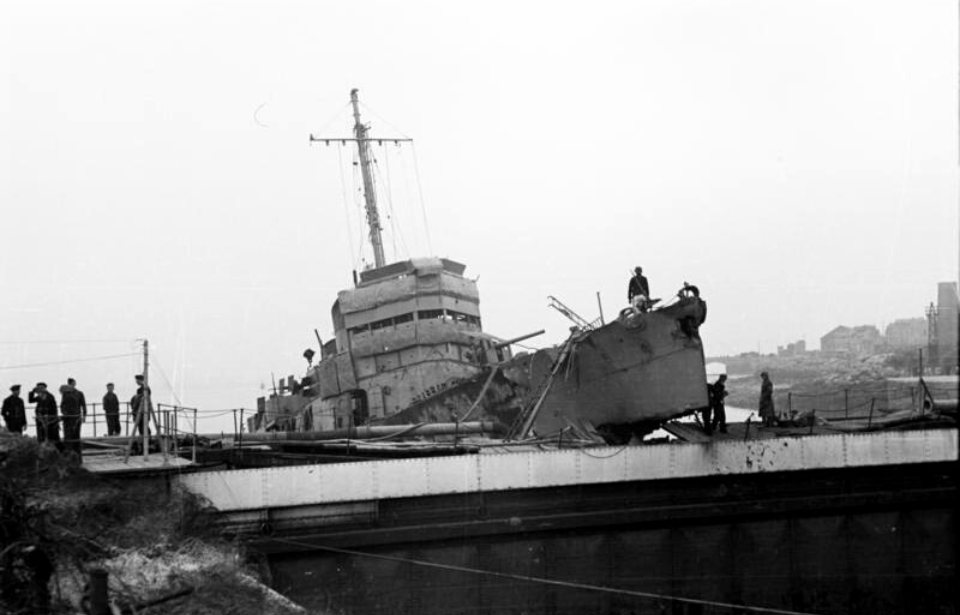By early 1942, the British had faced continued setbacks as a result of Germany’s escalation of the Second World War. Air raids decimated city streets, and the enemy continually unveiled new technologies. Prime Minister Winston Churchill and the country’s military needed a bold strategy to bolster morale, while buying more time for the United States to ramp up its war effort following Pearl Harbor. This resulted in one of the most daring and heroic missions of the conflict: Operation Chariot.
Counteracting the ultimate German threat
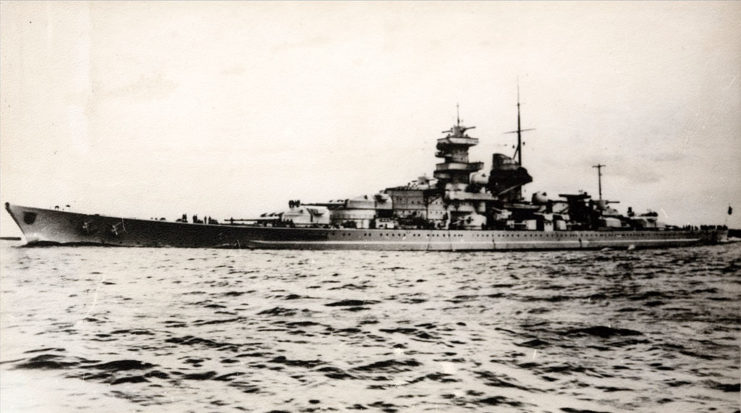
By January 1942, the Kriegsmarine had grown its U-boat fleet to nearly 200 vessels. On top of that, the brand new battleship Tirpitz threatened to overshadow all Allied advancements, in particular the sinking of Bismarck. Bismarck was the largest ship Germany had ever built and among the most menacing. She was ultimately sunk by the British in 1941, but at a tremendous cost. The HMS Hood was sunk by enemy fire, while her sister ship, the HMS Prince of Wales, suffered serious damage.
At 50,000 tons, Tirpitz was not only larger than Bismarck, but faster and more lethal. With a top speed of 30 knots and a range of 8,000 miles, the battleship was equipped with eight 38 cm SK C/34 guns, as well as dozens of 15 cm L/55 and 10.5 cm SK C/33 guns, a number of anti-aircraft guns and eight torpedo tubes. With these, she could destroy or outrun any ship in the British fleet.
As Tirpitz loomed in the fjords of Norway, the “whole strategy of the war” turned toward the battleship. Churchill appointed Vice Adm. Lord Mountbatten to devise a plan to take out the vessel, and, before long, Operation Chariot was officially underway.
Preparing the HMS Campbeltown for Operation Chariot
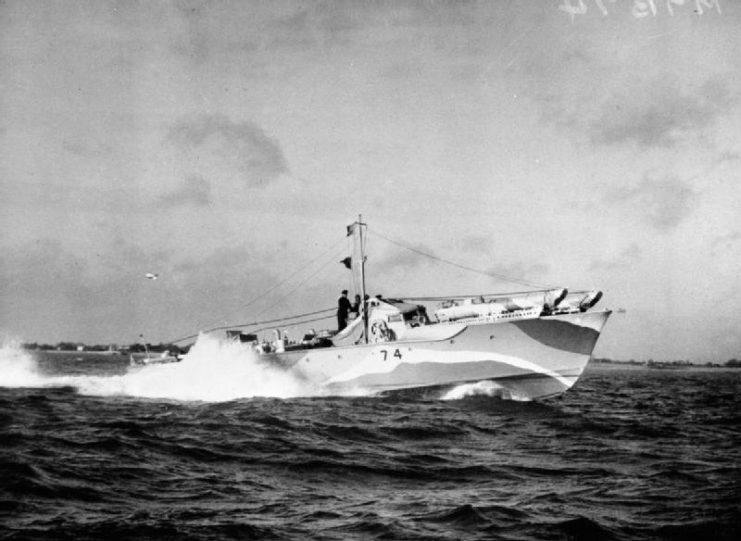
The goal of Operation Chariot was to target Tirpitz‘s last safe haven, greatly reducing the chance of future attacks in the North Atlantic. The raid was set to destroy the Normandie dry dock in the Bassin de Saint-Nazaire, on the west coast of France.
The Normandie dry dock contained essential machinery for German U-boats and vessels in the area. Along with featuring pump houses that controlled the water levels, there were also anti-aircraft emplacements and fortified U-boat pens that were reinforced with steel and concrete. It was one of the only sites large enough to accommodate a large ship like Tirpitz.
The British originally planned to destroy the dock by sacrificing a specially-outfitted destroyer packed with explosives. It would ram into the gates, clearing the way for the Commandos to enter and destroy remaining infrastructure and gun positions, while the Royal Air Force (RAF) simultaneously conducted air raids over the site.
Officials condemned the plan, claiming it was too risky to explode one of the Royal Navy’s own destroyers. They suggested the use of the old Free French destroyer Ouragan, along with a flotilla of smaller motorboats, to transport the Commandos and evacuate them after the mission. Ultimately, it was decided the World War I-era destroyer HMS Campbeltown (I42) would be used.
Inside the bow of Campbeltown, two dozen 180 kg depth charges were cemented together, totaling five tons of explosives. Three fuses were set to spark the explosion eight to 10 hours after they were activated by the collision with the dry dock. Oerlikon guns were added, and the destroyer’s main naval gun was replaced with a 12-pounder.
Launching the raid on Saint-Nazaire
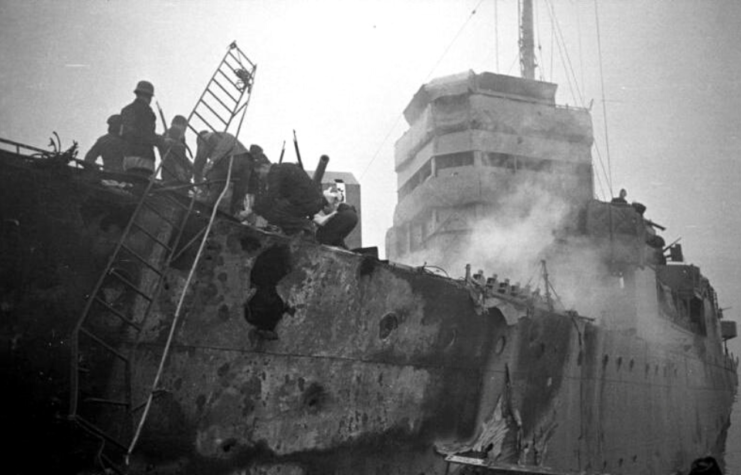
Operation Chariot was set to occur on March 28, 1942. It would ultimately prove successful, but at a great cost. Of the 611 Royal Navy Sailors and Commandos involved, 169 perished and 265 were captured. Those who survived were named heroes and earned more Victoria Crosses than in any other operation during the war.
Two days before the raid, three destroyers and 16 small boats departed from Falmouth, Cornwall for Saint-Nazaire. Since they didn’t have the range to reach their target, the HMS Campbeltown and Atherstone (M38) towed a Motor Torpedo Boat (MTB) and Motor Gun Boat (MGB). The HMS Tynedale (L96) was also part of the mission.
At 9:00 PM on March 27, 1942, the convoy left Atherstone and Tynedale as a sea patrol, while the MGB and two Torpedo Motor Launches took the lead, with Campbeltown following behind. The remaining Motor Launches formed two columns on either side of Campbeltown, while the MTB made up the rear.
At 10:00 PM, Campbeltown raised a German naval ensign in an attempt to deceive lookouts into thinking she was a German destroyer. At 11:30 PM, five RAF squadrons began bombing the area around Saint-Nazaire, to draw the Germans’ attention to the sky. By 1:00 AM the following morning, German Kapitän zur See Karl-Conrad Mecke realized a landing was underway and ordered his men into position.
The HMS Campbeltown enters the action
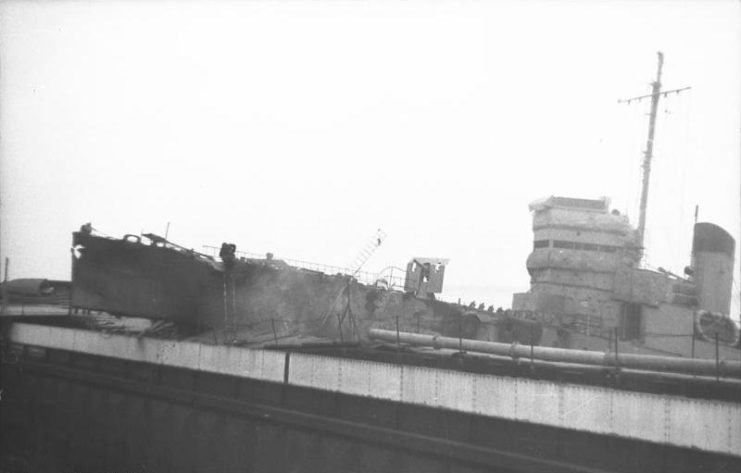
The HMS Campbeltown continued toward the dock through shallow waters, twice hitting the bottom of the Loire estuary. By the time they were eight minutes away, the convoy was illuminated by searchlights and fired upon. However, Campbeltown continued to deceive the enemy by sending a coded message, which read, “Ship being fired upon by friendly forces.” This afforded the British a few more moments before the Germans opened fire.
Despite being hit several times, Campbeltown increased her speed to 19 knots and cut through the anti-torpedo netting guarding the dock’s entrance. At 1:34 AM, the destroyer, three minutes off schedule, rammed the gate. The impact was so great that the ship was pushed up 33 feet, crushing 36 feet of the bow filled with explosives – the ideal position to cause maximum damage.
The Commandos disembarked. Demolition teams set to work destroying machinery. Nearly all achieved their missions, but German reinforcements eventually overwhelmed the escape vessels. With 100 men still ashore, Lt. Col. Charles Newman realized evacuation by sea would be impossible. He collected as many survivors as he could and gave them three orders:
- To do our best to get back to England
- Not to surrender until all our ammunition is exhausted.
- Not to surrender at all if we can help it.
Newman led a charge across a bridge into a neighboring town, but his men were ultimately surrounded and forced to surrender. Only five were able to escape, reaching Spain and eventually making it home to England. The remaining became prisoners of war (POWs).
Operation Chariot ends with HMS Campbeltown exploding
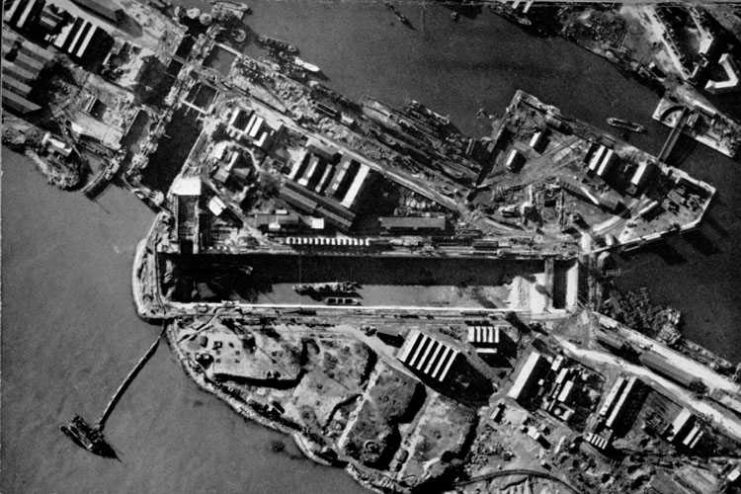
At noon on March 28, the explosives stowed aboard the HMS Campbeltown detonated, destroying the dry dock. Two tankers were ruined and 360 German soldiers were killed, including 40 senior officers and civilians who were touring the destroyer. Even months after the explosion, reconnaissance aircraft could see the wreck of Campbeltown still lodged inside the dry dock.
More from us: The Long Range Desert Group was the ‘Finest of All Units’ to Serve in North Africa
One captured British Commando recalled the exact moment the ship exploded, as he was being interrogated by a German officer. The enemy soldier remarked that it wouldn’t take them long to repair the damage Campbeltown had caused, when “just at that moment, she went up.” The Commando smiled and told the officer, “We’re not quite as foolish as you think!”
